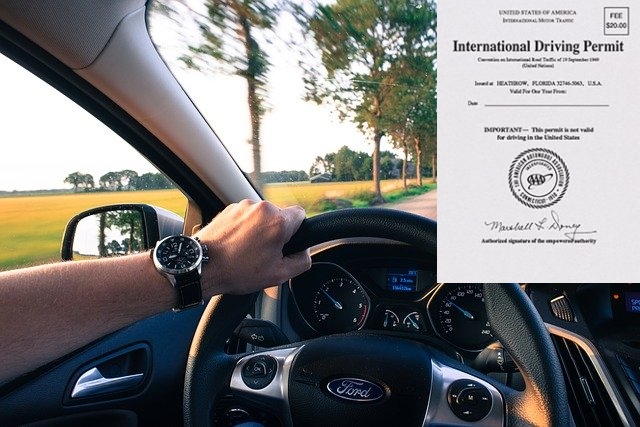An International Driving Permit or IDP is a translation of your original licence from your home country, proving to the relevant authorities that you can drive and which vehicles you are able to drive.
Because the permit is simply a translation of these details, you will not be required to take any type of practical or written tests to obtain it. In Spain, the IDP is valid for 12 months.
The Dirección General de Tráfico (DGT), Spain’s Directorate-General for Traffic, stresses the IDP is a complementary permit and that if you use one, you always have to have your foreign driving license and your passport with you in order for it to be valid.
But who needs to apply for an IDP and who can just use their foreign license on its own?
Tourists from EU countries
According to the DGT, drivers with licences from EU or EEA countries do not need an IDP. If travelling around and driving in Spain, those from the EU or EEA can just continue to use their normal license here.
If you are in Spain for more than six months however, you should technically exchange your licence for a Spanish one.
Non-EU countries
The DGT recommends that all tourists from third countries who want to drive in Spain apply for an IDP before they arrive, but do stress there are exceptions.
If you have a licence from a country where your licence is written in Spanish, such as most South and Central American countries, you will not need an IDP.
You will also not need an IDP if your licence is from a country that was issued in accordance with Annex 9 of the Geneva Convention or with Annex 6 of the Vienna Convention.
This includes the vast majority of countries in Europe, many African and Asian nations but unfortunately not English-speaking nations such as the United States, Canada, New Zealand or Australia. You can check the full list of countries that don’t need an IDP here. If your driving licence was issued in a country that’s not on the list, then you technically need to get an IDP.
It’s also worth noting that while the permit is valid for one year, you can only use it for a maximum period of six months at a time, since you should not be using it if you reside in Spain.
If six months has elapsed and you are still in Spain, you should exchange your driving licence for an equivalent Spanish one, or if this is not possible, then get a new Spanish licence.
There are a few exceptions, however.
Tourists from the UK
According to the British government website, tourists who hold a valid British licence do not need an international driving permit to drive in Spain.
During the summer of 2022, the UK Embassy in Madrid sought to clarify that this was the case after confirming it with Spanish authorities, following a number of reports that some UK tourists in Spain had been wrongly fined for not having an IDP.
“In Spain, there are several authorities who have the responsibility to enforce traffic rules and issue fines. If you or someone you know has been fined and wish to appeal, you must first check which body issued the fine and then follow the appropriate process to appeal,” the UK Embassy wrote.
However, if you only have a paper driving licence or your licence was issued in Gibraltar, Guernsey, Jersey or the Isle of Man, then you may need to apply for an IDP.
Tourists from the US, Canada, Australia and New Zealand
As mentioned earlier, American, Canadian, Australian and New Zealander tourists in Spain do technically require an IDP if they wish to drive in Spain during their stay.
The US government website confirms that “citizens visiting Spain who want to drive in here must obtain an international driving permit prior to their arrival in Spain”.
The Canadian government states that “Canadian travellers may drive during their visit in Spain if they hold a valid Canadian provincial driver’s licence and an International Driver’s Permit (IDP). To obtain an IDP, contact your local Canadian Automobile Association (CAA) office or visit the CAA website”.
And according to the Australian Embassy in Spain, “Under Spanish law, Australians on a 90 day Schengen Visa may drive a vehicle in Spain if they hold a: valid Australian State or Territory Driving Licence and valid International Driver’s Licence. To obtain an International Driver’s license contact your relevant State or Territory Automobile Club, such as the NRMA, RACV, RACQ etc”.
Reality and consequences
As often happens in Spain, what is the law in theory doesn’t always apply in practice or is up to the individual’s intepretation of the rules.
Some car rental companies will not rent you a vehicle if your licence is from a country where you need to have an IDP to drive in Spain. However, many other rental companies will have no issue at all with renting a car out to you, so it could be just a case of asking around.
Likewise, Spanish Civil Guard or National police will not necessarily ask you for an IDP either if they stop you, which is pretty unlikely in the first unless you’ve committed a driving offence or they’re carrying out random road checks.
Could you be required to have an International Driving Permit by a Spanish police officer? Yes, it is possible, and depending on their interpretation of the infraction it could result in a fine or your vehicle being confiscated. But in the majority of cases, Spanish police will be willing to turn a blind eye to minor infractions committed by tourists.
Some foreigners on online forums have commented that it felt like an unnecessary money-making scheme to need an IDP for Spain, whilst other tourists who were pulled over by traffic cops in Spain commented that they should have had one.
Our advice is that it’s still worth going to the trouble of getting an IDP if you’re required to have on, just in case.
If your licence isn’t in English or in a Roman alphabet language, the chances of you being asked for an IDP are likely to be higher.
READ ALSO: What you need to know about getting an IDP in Spain for travel overseas



 Please whitelist us to continue reading.
Please whitelist us to continue reading.
Member comments